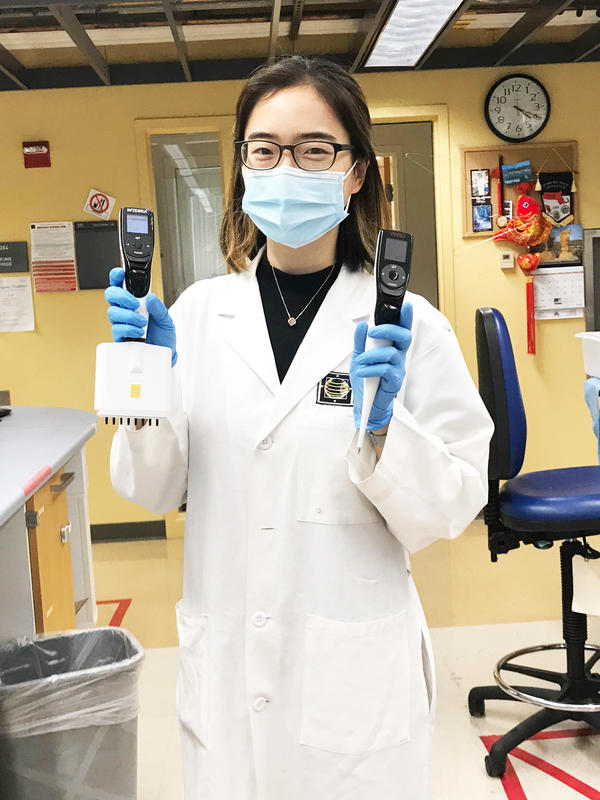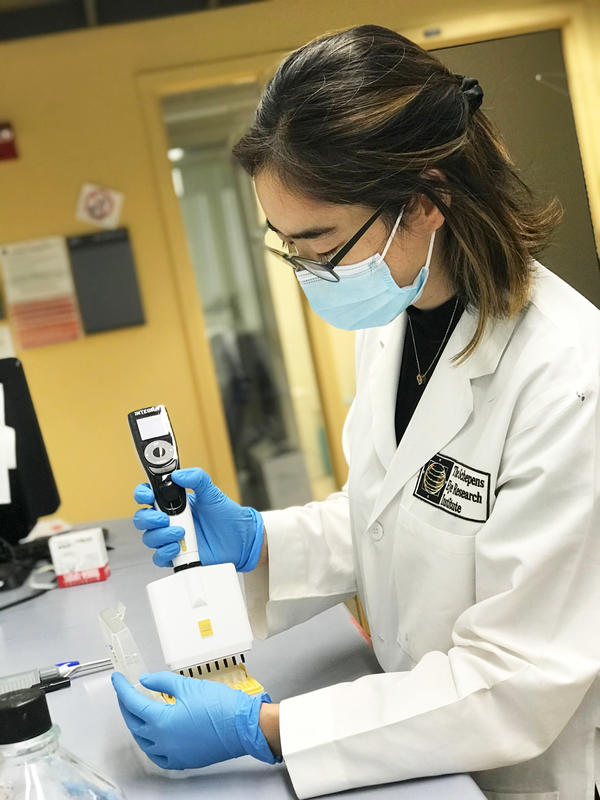A better qPCR pipetting experience
From patients to pipettes
After graduating in optometry from the University of New South Wales in Sydney, Daisy worked as an optometrist for two years before deciding to pursue a PhD in cataract research at the University of Sydney. She explained: “The move from my usual clinical work with patients to research was a big change for me, as I had to dive deep into molecular biology. I didn't even know how to use a pipette back then! Cataracts – clouding of the eye’s lens – are a leading cause of blindness worldwide, and I studied their formation and ways to prevent that happening. My focus was on transforming growth factor beta (TGF-β), which has an important role in cancer metastasis, but is also relevant for certain types of cataracts. I looked at the different signaling pathways it activates and how those pathways interlink.”
Daisy completed her PhD in January 2019, and straight afterwards flew to Boston to work as postdoctoral fellow in the Saint-Geniez laboratory, continuing her research into eye health. Here, she was able to apply her knowledge of TGF-β to age-related macular degeneration (AMD). Daisy continued: “I'm now looking at how TGF-β causes the retinal mitochondria to change morphology and become dysfunctional, altering cellular metabolism. The research is still at an early stage, so we're mainly trying to understand how to prevent AMD, but the end goal is to find a cure.”

A better pipetting experience
At Harvard, Daisy was introduced to VIAFLO electronic pipettes, which were a complete contrast to the large, fully automated pipetting workstation she had used during her PhD research. The laboratory was already using two VIAFLO pipettes – a 125 µl eight channel pipette and a 12.5 µl single channel version – and their flexibility compared to the automated workstation dramatically improved her pipetting experience. “Complete automation on a large workstation has its place, but there are downsides,” said Daisy. “You have to program every single step perfectly before you can click one button and run the protocol, and the process of fine-tuning takes a long time.”
“I found the VIAFLO pipettes amazing. A lot of our work is PCR-based, performed in 384 well plates, and the VIAFLO pipettes are real lifesavers. I use the eight channel VIAFLO for most qPCR liquid transfers, and the single channel pipette to add the primers. Once you've made your master mixes and programmed the pipette, it's really fast; it only takes me 20 minutes to do a complete 384 well plate. When I was using the robotic workstation in Sydney, I used to think that doing a qPCR was really a big deal. Now, with the INTEGRA pipettes, it's just so easy.”

VIAFLO pipettes provide a choice of pipetting modes and allow easy adjustment of parameters such as volume and speed, as well as providing pre-set programs and the option for custom workflows. This helps laboratories to reduce errors and increase throughput and reproducibility regardless of the users’ pipetting experience. For Daisy, VIAFLO electronic pipettes have become the standard for how pipetting should be: “In any pipetting workflow, you have to get every step right first time, otherwise you’d end up having to troubleshoot the assay and do it again. I'm really surprised when I hear people from other labs say they pipette each well individually with manual single channel pipettes. I’m sure that would take forever compared to electronic pipetting, and my eyes would really suffer. The VIAFLOs make everything easy. I love the color coding – it makes it so simple to match the right tip to the right pipette – and the instrument can even be set to alert you when you need to pipette again.”
Further reading:
- eBook: How to become a PCR pro
- The complete guide to PCR
- The top variables that can make or break your PCR success























